View in other NatureServe Network Field Guides
NatureServe
Montana
Utah
Wyoming
Idaho
Wisconsin
British Columbia
South Carolina
Yukon
California
New York
Howell's Pussytoes - Antennaria howellii
Other Names:
Antennaria neodioica, Antennaria neglecta var. attenuata
Native Species
Global Rank:
G5
State Rank:
S5
(see State Rank Reason below)
C-value:
4
Agency Status
USFWS:
USFS:
BLM:
External Links
State Rank Reason (see State Rank above)
Antennaria howellii and Antennaria neglecta occur in Montana, but are difficult to separate (Bayer in FNA 2006; Giblin et al. [eds.] 2018). Antennaria howellii is derived by hybridization of four or more species (A. neglecta, A. plantaginifolia, A. racemosa, A. virginica, and perhaps A. marginata) (Bayer in FNA 2006; Giblin et al. [eds.] 2018). Antennaria neglecta, in the strict sense, is not a hybrid, but is a sexual diploid species (Bayer in FNA 2006; Giblin et al. [eds.] 2018). Distinguishing populations of Antennaria howellii (primarily an apomictic polyploid hybrid) from Antennaria neglecta (which have not hybridized) requires scrutinizing a population for the presence and abundance of male plants which is very challenging. Collectively the species are common in Montana and a conservation status rank of S5 has been assigned to Antennaria howellii.
General Description
PLANTS: Perennial, herbaceous forbs that produce stolons (creeping stems that grow on the ground’s surface). Plants are 5-20 cm tall. Populations either have staminate (male) and pistillate (female) plants in equal frequency or have no staminate plants. Source: Bayer in FNA 2006.
LEAVES: Basal leaves are 1-3 nerved, spatulate in shape, 15-20 mm long, 4-6 mm wide, and tipped with a short, sharp, and slender point (mucronate). Upper side of basal leaves are gray-tomentose while their lower side is gray-glabrous with white-wooly margins. Cauline leaves are linear, 7-16 mm long, and with acute tips that are not flagged (not discolored, twisted, and scarious extensions of the leaf tip). Source: Bayer in FNA 2006.
INFLORESCENCE: 5-8 flowers heads are in a corymbiform arrangement. Staminate (male) flower heads have involucres of 4.5-7 mm tall. Pistillate (female) flower heads have involucres of 5-7(-9) mm tall. Involucral bracts (phyllaries) are relatively wide and distally white with acuminate apices. Staminate corollas are 3- 5 mm long. Pistillate corollas are 4.5-6.5 mm long. Source: Bayer in FNA 2006.
Antennaria howellii and Antennaria neglecta are combined into an expanded concept using the older name (Antennaria neglecta) in the Manual of Montana Vascular Plants (Lesica et al. 2012).
Phenology
Flowering during summer (Bayer in FNA 2006).
Diagnostic Characteristics
For identifying Antennaria species, it is important to note (Bayer in FNA 2006):
* the presence or absence of male plants in a population,
* if the population is mat-forming due to the presence of stolons,
* if well-developed stolons root at their tips or not, and
* the presence or absence of ‘flags’ on the tips of mid- and upper-stem leaves. Flags are flat, linear, scarious appendages of the leaf tips. Flags are not to be confused with subulate or blunt leaf tips which are basically green and herbaceous.
In Montana, two subspecies of Antennaria howellii are reported (Lesica et al. 2012).
The MTNHP is not tracking these varieties, but will retain within the botany database the subspecies name if provided by the observer.
Subspecies howellii has basal leaves that are completely glabrous on their upper surface and have been found in northwest Montana.
Subspecies neodioica (synonym ssp. petaloidea) has basal leaves that become nearly glabrous with age.
Species Range
Montana Range
Range Descriptions
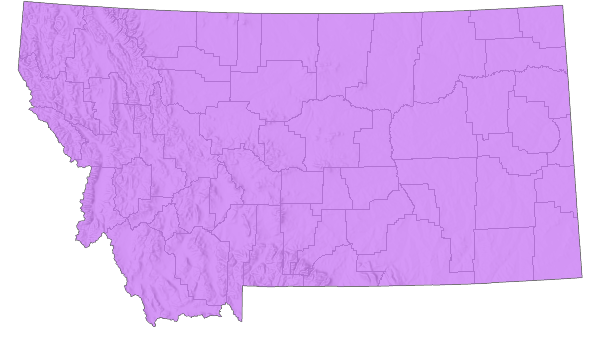
 Native
Native
Range Comments
YT to QC south to CA, UT, CO, OK, KY, and SC (Lesica et al. 2012. Manual of Montana Vascular Plants. BRIT Press. Fort Worth, TX).
Observations in Montana Natural Heritage Program Database
Number of Observations: 140
(Click on the following maps and charts to see full sized version)
Map Help and Descriptions
Relative Density
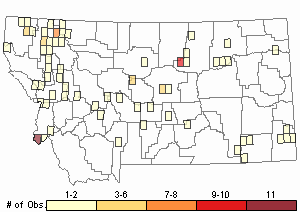
Recency

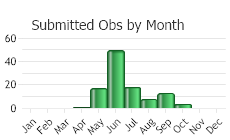
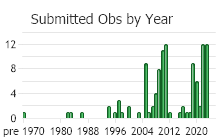
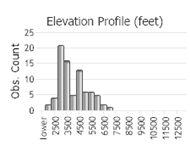 (Observations spanning multiple months or years are excluded from time charts)
(Observations spanning multiple months or years are excluded from time charts)
Habitat
Grasslands, woodlands, and open forest in the plains, valleys, and montane zones of Montana (Lesica et al. 2012). Moist forests, slopes, tops of ridges under Douglas-fir, Ponderosa Pine, Engelmann spruce, or Gambel Oak trees, and in forest openings (Bayer in FNA 2006).
Ecology
POLLINATORS The following animal species have been reported as pollinators of this plant species or its genus where their geographic ranges overlap:
Bombus pensylvanicus (Colla and Dumesh 2010).
Stewardship Responsibility
References
- Literature Cited AboveLegend:
 View Online Publication
View Online Publication Colla, S.R. and S. Dumesh. 2010. The bumble bees of southern Ontario: notes on natural history and distribution. Journal of the Entomological Society of Ontario 141:39-68.
Colla, S.R. and S. Dumesh. 2010. The bumble bees of southern Ontario: notes on natural history and distribution. Journal of the Entomological Society of Ontario 141:39-68. Flora of North America Editorial Committee. 2006. Flora of North America North of Mexico. Vol. 19. Magnoliophyta: Asteridae, part 6: Asteraceae, part 1. Oxford Univ. Press, New York. xxiv + 579 pp.
Flora of North America Editorial Committee. 2006. Flora of North America North of Mexico. Vol. 19. Magnoliophyta: Asteridae, part 6: Asteraceae, part 1. Oxford Univ. Press, New York. xxiv + 579 pp. Hitchcock, C.L. and A. Cronquist. 2018. Flora of the Pacific Northwest: An Illustrated Manual. Second Edition. Giblin, D.E., B.S. Legler, P.F. Zika, and R.G. Olmstead (eds). Seattle, WA: University of Washington Press in Association with Burke Museum of Natural History and Culture. 882 p.
Hitchcock, C.L. and A. Cronquist. 2018. Flora of the Pacific Northwest: An Illustrated Manual. Second Edition. Giblin, D.E., B.S. Legler, P.F. Zika, and R.G. Olmstead (eds). Seattle, WA: University of Washington Press in Association with Burke Museum of Natural History and Culture. 882 p. Lesica, P., M.T. Lavin, and P.F. Stickney. 2012. Manual of Montana Vascular Plants. Fort Worth, TX: BRIT Press. viii + 771 p.
Lesica, P., M.T. Lavin, and P.F. Stickney. 2012. Manual of Montana Vascular Plants. Fort Worth, TX: BRIT Press. viii + 771 p.
- Additional ReferencesLegend:
 View Online Publication
View Online Publication
Do you know of a citation we're missing? Lesica, P., M.T. Lavin, and P.F. Stickney. 2022. Manual of Montana Vascular Plants, Second Edition. Fort Worth, TX: BRIT Press. viii + 779 p.
Lesica, P., M.T. Lavin, and P.F. Stickney. 2022. Manual of Montana Vascular Plants, Second Edition. Fort Worth, TX: BRIT Press. viii + 779 p.
- Web Search Engines for Articles on "Howell's Pussytoes"





